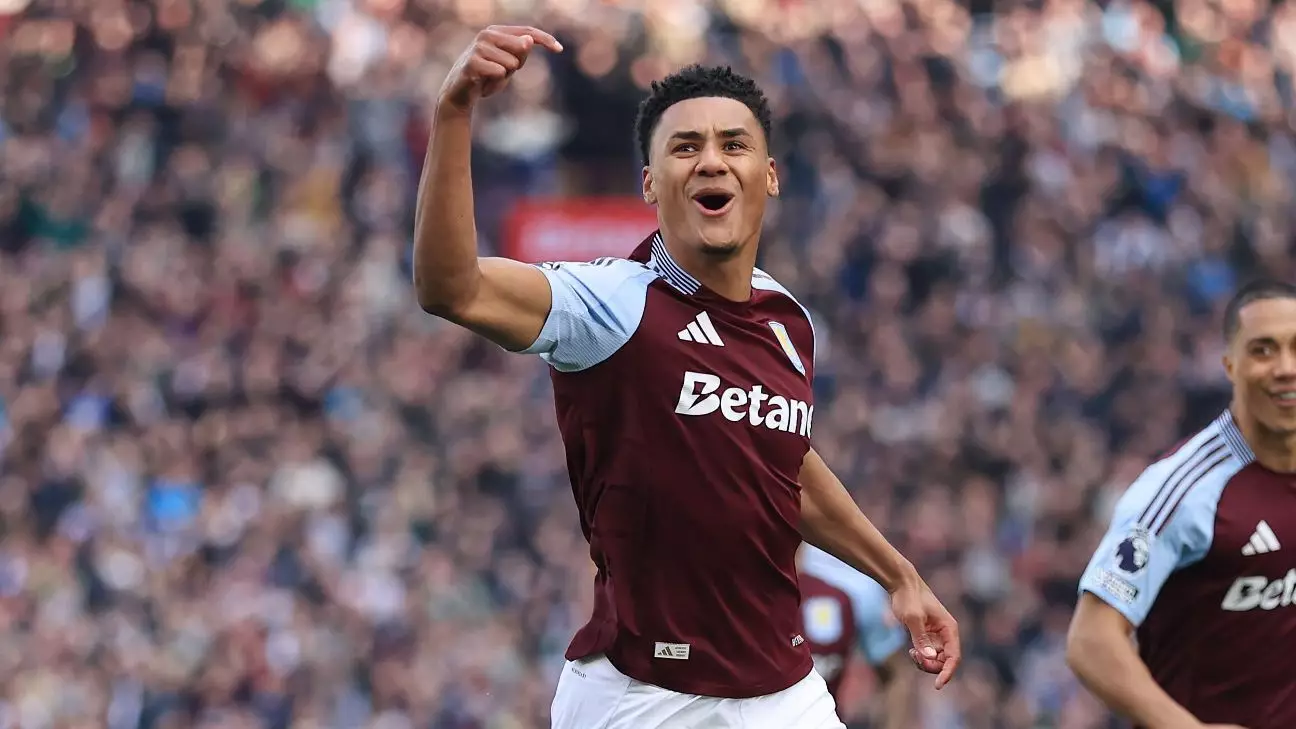In the world of football, transfers are an essential component that significantly influences a club’s trajectory, both on the pitch and financially. As teams face shifting dynamics—be it player performance, management changes, or financial pressures—the urgency to recalibrate rosters becomes paramount. Recent reports have surfaced about Manchester United’s intriguing prospects, including a potential swap deal involving Ollie Watkins and Marcus Rashford. This move, while still speculative, reflects a broader narrative threading through European football: the intertwining of player abilities and strategic decisions at the club level.
Manchester United is back in the headlines. The historic club is reportedly looking at a swap deal that could see Rashford, an academy product with immense talent, exchanged for Watkins, an England teammate and emerging star at Aston Villa. A transfer like this could change the fortunes of both players involved. Visibility at the Premier League level paired with the prospect of European competition could elevate a player’s market value. Yet, the lingering question remains—how much do such moves depend on other factors, including managerial vision and club finances?
Rashford and Watkins: A Case Study in Player Value
Marcus Rashford has long been a fan favorite at Manchester United. Previously valued at around £40 million, his skillset and brand value have diminished over time due to inconsistent performances and injury challenges. On the flip side, Ollie Watkins represents a refreshing option for the Red Devils, showcasing versatility and growth beneath the guidance of Unai Emery at Aston Villa. The potential for Rashford to remain at Villa Park while Watkins heads to Old Trafford could prove mutually beneficial.
However, the negotiation table in football is fraught with complexities. Swap deals, unlike cash transactions, require a delicate balance to ensure satisfaction for both clubs involved. For United, securing Watkins might provide the striking force they desperately need, especially in a season where Champions League qualification hangs in the balance. The need to fortify their squad may present an opportunity to re-evaluate Rashford’s long-term prospects at United.
Competition Breeds Innovation
The intrigue doesn’t stop with just the United-Aston Villa affair. Reports indicate that Crystal Palace’s Eberechi Eze has caught the eye of the Red Devils and will soon command substantial attention in the transfer market. The inclusion of Aston Villa in this race only intensifies the competition, giving rise to a fierce bidding war that could result in a significant financial commitment. Clubs like United need to be strategic, as the allure of European competition could become a pivotal draw in attracting talent.
Despite potential financial implications, ambition will guide choices. Manchester United’s management, led by Ruben Amorim, must be willing to spend if they aim to return to their former glory. A shift toward strategic transfers, especially in light of performance trends and market insights, becomes more relevant than ever.
Goalkeeping Conundrums and Strategic Shifts
While the spotlight is on attacking talent, goalkeeper situations are no less critical. Underperforming squads faulted for defensive mishaps often turn to fresh talent in net. One eye-catching case is Manchester City exploring a move for Diogo Costa of FC Porto following injuries to Ederson. The premise of a significant investment for a new goalkeeper underpins the necessity of ensuring club stability come what may.
The tactical philosophy at play should underline how players are assessed, both on current form and future potential. With clubs at the forefront willing to spend big for a goalkeeper they deem “the next Ederson,” the dynamics governing decision-making in the transfer market continue to evolve.
Emerging Trends in European Football Transfers
What sets this transfer season apart is the increasing role of younger talents commanding attention from across Europe. For instance, interest in players like Xavi Simons and Bryan Mbeumo indicates clubs are taking calculated risks on young players with the potential to mature into transformative assets. Football’s evolving financial landscape recognizes that investing in youth isn’t merely a luxury—it’s a necessity.
Emerging and ambitious clubs face off against league giants, determined to build competitive rosters by focusing on youth development. The rise of young www.next-gen players stands in stark contrast to the traditional approach of investing heavily in established stars. While marquee signings capture headlines, the long-term view often yields better dividends—allowing clubs to harness talent while maintaining financial prudence.
The game is rife with opportunities for those who are prepared to adapt creatively to its ever-changing nature. Transfer windows are more than ceremonial periods—they’re battlegrounds where future ambitions take shape. With strategic vision from both management and players, the landscape of football transfers could redefine what success looks like moving forward.

